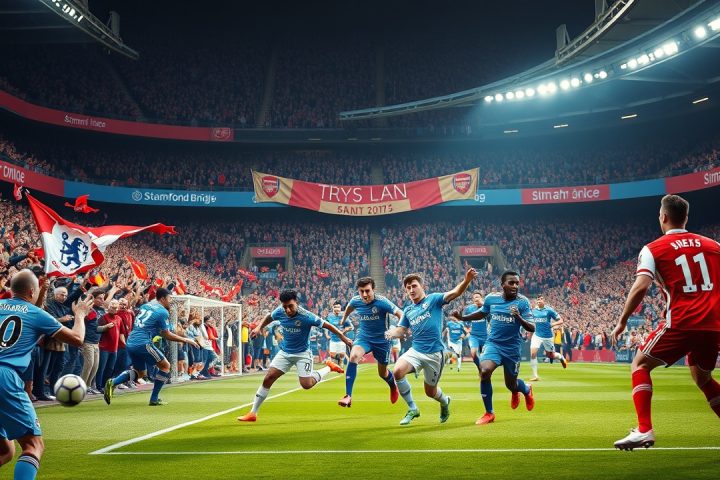Premier League Transfer Season Overview
This summer marks a frenzied start to the Premier League transfer season, with elite clubs rapidly making high-stakes moves to secure top talent. As of now, over a dozen deals have been finalized, each costing in excess of £30 million. Chelsea and Manchester City are taking the lead in acquisitions as they prepare for the upcoming Club World Cup, while Liverpool has already invested more than £170 million to boost their squad for a title defense.
Although significant spending often leads to improvements, the outcomes are anything but guaranteed. New players frequently require time to adjust to their new environments, and their arrivals can disrupt existing team dynamics. In this piece, we will explore six of the notable transfers, highlighting the hurdles that each new player might face.
Notable Transfers and Challenges
Frimpong’s Position Change
The recent acquisition of Frimpong by Liverpool raises questions about his suitability at right back, a position left vacant following Trent Alexander-Arnold’s exit. While Frimpong has primarily played as a wing-back or in more advanced roles during his tenure at Bayer Leverkusen, his previous stint as an actual right back is distant. He has played in that role for the Netherlands only a handful of times recently. His ability to adapt back to right back will be tested, especially as he steps into a more challenging league environment.
Liverpool’s tactical shift is evident in their pursuit of a different style of right back when compared to Alexander-Arnold, avoiding a more straightforward replication of his skills. Yet, this choice creates its own set of uncertainties.
Adjusting the Left-Back Dynamics
Meanwhile, on the left side, the signing of Kerkez is viewed as an important long-term investment to replace Andy Robertson, who is showing signs of wear after five seasons at the pinnacle of competition. Kerkez possesses similar energy and tenacity to the Scottish international, but he is still very much a work in progress, given his youth and limited top-tier experience.
One area where Kerkez may struggle initially is in Liverpool’s build-up play, as Robertson frequently shifted into central positions—a tactic Kerkez has not been accustomed to executing. Instead, Kerkez’s prior coaching methods did not emphasize these strategic movements, meaning he may have to adjust significantly to Liverpool’s requirements.
Additionally, experts have pinpointed Kerkez’s impulsiveness in one-on-one situations as a potential vulnerability, particularly against the skilled wingers in the Premier League. His recovery speed may mitigate some risks, but without refinement in his defensive approach, he could face challenges.
The Arrival of João Pedro at Chelsea
In a notable shift in their transfer approach, Chelsea has added João Pedro from Brighton, signaling an evolution in their squad composition. Over the past two years, they struggled with a single natural striker, but now they have a trio—including the recent additions of Pedro and Liam Delap—each bringing unique skills. Unlike the more traditional forwards, Pedro presents a layout akin to former Liverpool striker Roberto Firmino—talented as a facilitator as well as a scorer.
However, the current set-up at Chelsea does not highlight the advantages of a player like Pedro in the way Liverpool’s system did for Firmino. The challenge lies in how Chelsea’s wingers, who are less prolific than their Liverpool counterparts, can complement Pedro’s style effectively on the field. If Pedro’s scoring remains below expectations, the pressure will escalate for other team members to compensate.
Gittens’ Transition Back to England
After an unsuccessful stint at Manchester City’s academy, Gittens’ impressive season with Dortmund, leading to a £55 million return to Chelsea, showcases his potential. Despite scoring 12 goals last season, many came during Dortmund’s chaotic early campaign. Following a managerial change, Gittens found his playtime reduced as he struggled to adapt his performance to a more team-oriented approach.
While his attacking flair is evident, Chelsea’s management must navigate his development to enhance his understanding of collective tactical movements to flourish within the club’s expectations.
Cunha’s Future Performance
Lastly, there’s Cunha, whose stunning performance last season, ending second in expected goals overperformance, raises skepticism about whether he can replicate this success. The striker’s impressive goalscoring from challenging positions casts a shadow of uncertainty over his consistency moving forward.
Data analysts suggest that while such overachievements occasionally signal a player hitting their peak, the unpredictability involved means it’s uncertain whether Cunha can maintain his superb form under the new regime. The framework of the team, under Rúben Amorim, may lend opportunities for continuing this scoring trend, but it remains to be seen how the dynamics play out this season.




